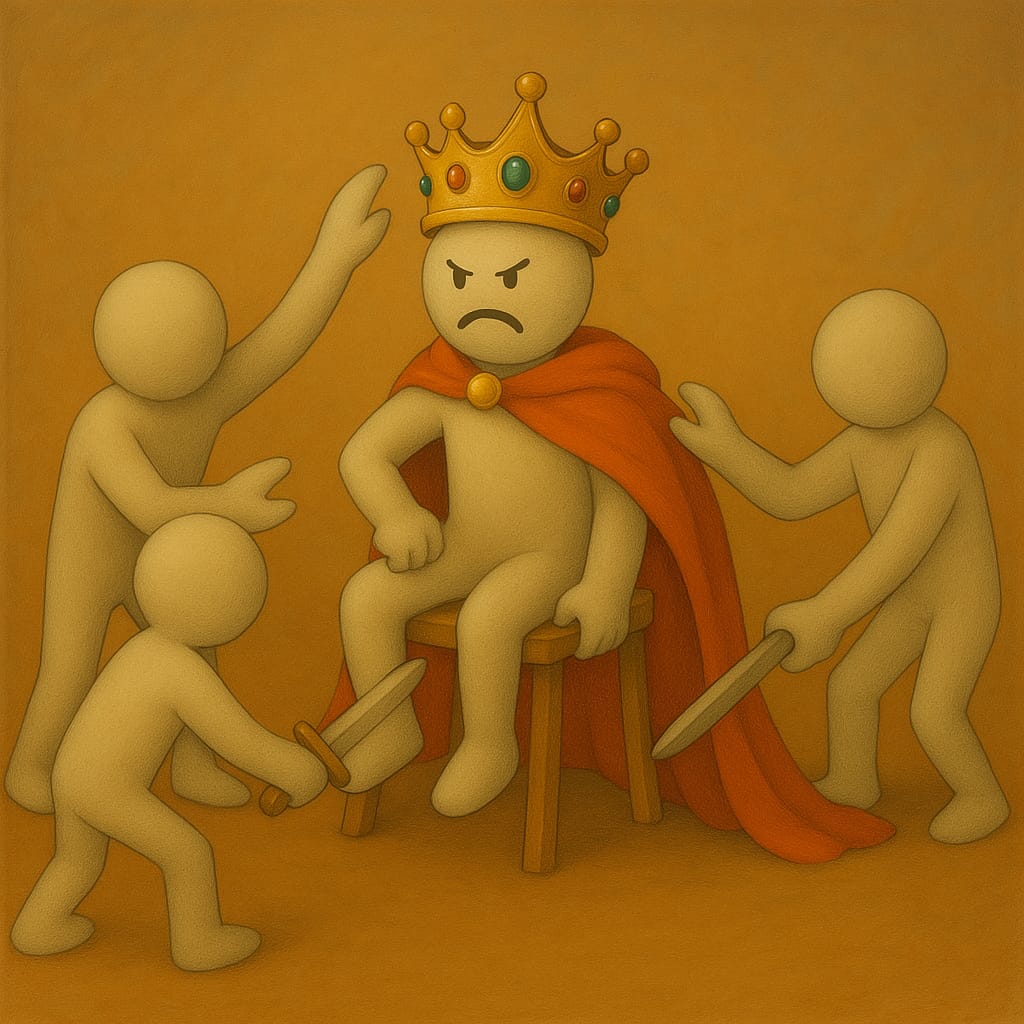
The weather is nice! (But is this an idea?)
As a creativity researcher, I study the way people generate and respond to creative ideas. Every conversation I have about this sooner or later arrives at the question: “What do you call a ‘creative’ idea? How can you even measure something like that?” People who ask me this soon learn to regret their mistake: I happen to find this question very interesting indeed, and will happily talk to you about it until your ears start to bleed.
What is surprising, though, is that a much more fundamental question never gets asked: “what do you call an idea?”
Words and definitions
One of the first things a psychology student learns about is the importance of definitions and operationalizations. Psychologists use everyday words (like ‘thinking’ and ‘feeling’) in very specific ways, and you can’t adequately measure or manipulate anything if you don’t know what it is you’re trying to measure or manipulate. A dictionary isn’t going to help you there, because colloquial usage is too broad and vague to be useful for scientific research.
Still, sometimes things seem so obvious that a definition doesn’t appear to be necessary. If I tell you “I want to try out an idea for a new recipe”, you know what I mean (and may wisely decide to go and eat elsewhere). If I do a creativity experiment and ask you to write down creative ideas for ways to improve teaching at the Psychology department, you have a pretty good notion of the kinds of things I want you to write down (even if you’re unsure whether they’ll turn out to be creative). So why bother with a more formal definition?
One reason is that creative behavior is studied across such a wide variety of settings and disciplines, including (but not limited to) psychology, management, design, and the performing arts. It’s highly unlikely that all researchers and practitioners in all these disciplines, with their different methodological and theoretical approaches, use exactly the same words to describe exactly the same phenomena. It’s much more likely that the word ‘idea’ is used to refer to a range of phenomena that may or may not have something in common. In fact, this is a common problem in the social sciences, and the methodologist Thorndike introduced the term ‘jingle fallacy’ for this more than a century ago. It’s clear why the jingle fallacy is problematic: if you and I both claim we are studying the same thing, yet in fact are not, we may end up with different and incompatible descriptions, conclusions or recommendations.
The more you start thinking about ideas, the more different kinds seem to pop up.
The recipe and teaching ideas above seem to be more or less in the same line. But there are so many ways to talk about ideas. What if we’re playing music together, and I ask you to “listen to this idea”? Or what if somebody tries to avoid a misunderstanding: “now don’t get the wrong idea”? How about sentences like “I just didn’t like the idea of having to do that”, or “some of her ideas seem really problematic.” The more you start thinking about ideas, the more different kinds seem to pop up.
This is why Mel Hua, together with Sarah Harvey and myself, set out to conduct a multidisciplinary review of creativity-relevant research, which got published in the Academy of Management Annals earlier this year. The goal of this project was to uncover how the word ‘idea’ is used in these various literatures, and to organize these various uses into a coherent framework. We had expected to find some differences (otherwise, why do the review), but were surprised at the scope of the divergence. One major result from our review was that ideas broadly seem to be conceptualized and studied in two fundamentally different ways.
Particle ideas and wave ideas
For example, researchers in organizational creativity and innovation will usually consider an idea to be a provisional proposal for action: a concrete way to address a particular problem, such as improving the quality of our teaching. This implies that these ideas are clearly phrased verbal descriptions of some sort of action, often accompanied by a brief statement of the problem and/or the way in which the idea is thought to be effective. A lot of creativity research revolves around these kinds of ideas, especially in social and organizational psychology. The cool thing about these kinds of ideas is that you can count them, and even try to rate them for creativity (often a combination of novelty and usefulness). This enables you to compare people’s creative output and to see whether, say, a particular trait or intervention predicts how well people perform. In our paper, we call this the ‘particle’ approach to ideas: they are treated as discrete, unitary entities with a fixed meaning. They can be stored, counted and coded, and as such lend themselves to quantitative study.
Qualitative research in dance and music groups shows that these artists routinely exchange and discuss their ideas, but that it’s often completely unclear where one idea ends and where the next begins.
In other lines of research, however, ‘ideas’ are very different. For example, more qualitative research in dance and music groups shows that these artists routinely exchange and discuss their ideas, but that it’s often completely unclear where one idea ends and where the next begins. An idea may be a musical phrase, or playing that phrase in a certain style, or a movement or sequence of movements – in fact, when one group member expresses an idea, each of the others in the group may have their own interpretation of what is being expressed and decide to build upon that. In other words, the boundaries and meaning of those ideas are not fixed, and they certainly need not be expressed in words. Similarly, designers will often ‘tinker’ with their materials, exploring ‘ideas’ which may be vague (and often unverbalized) notions of style or functionality, which may, again, mean different things to different people (or at different moments. In those cases, an idea isn’t something discrete that can be stored or judged on its own merits; rather, ideas and their meaning are in a state of permanent flux. Eventually, such ideas may lead to a creative product, but it would be impossible to store any specific idea and make sense of it on its own. We call this the ‘wave’ approach to ideas: they are part of a fluid, dynamic, and contextualized process that cannot be meaningfully cut into pieces.
The weather is nice!
So, although ‘particle’ researchers assume that ideas can be identified and coded by virtue of their content, ‘wave’ researchers suggest that ideas can’t really be separated from each other, because their meaning is inherently contextual. In our paper we argue that, if we want to understand creative behavior (which revolves around ideas), we really need both perspectives. But most researchers tend to focus on one, and neglect the other – or even to forget that another approach is possible at all. Brainstorming research is a good example – this research is all about quantifiable creative performance, testing hypotheses about which circumstances (like group interaction) have effects on people’s creative output. In these studies, counting and coding ideas (treating them as particles) is a given, and not even questioned. Of course this is how you study brainstorming. But it’s not really that obvious, because even in a brainstorming session, ideas can behave like waves, too.
Everybody who has ever used an idea-generation task in research knows how difficult it can be to identify and reliably code participants’ ideas.
We can illustrate this with the following example. Suppose that you are studying a group of friends who are brainstorming ideas for things to do. In the best brainstorming tradition, you want to count and code their ideas, to compare their performance with that of other groups. After some suggestions (let’s go and eat somewhere, see a movie, play a board game) group member Vincent says: “The weather is nice.” Would you count this as an idea? And if so, what does it mean, and how creative is it? It’s not really an answer to the question what to do. Then again, it does seem to hold potential for ideas: for example, it may lead to the suggestion by group member Jules that, indeed, maybe they should go outside and play football. So, who came up with this idea, and how many ideas are we even talking about? Jules made the concrete suggestion, but he probably saw Vincent’s observation about the weather as an implicit suggestion to go outside and have fun there. To you, as a researcher who never goes outdoors anyway, the possible ‘idea-ness’ of Vincent’s weather remark may only become clear after Jules’ football suggestion.
Trivial as this example may seem, it illustrates something fundamental (and irritating) about creativity research. How are we going to count and code ideas if it isn’t even clear what the idea is? In fact, everybody who has ever used an idea-generation task in research knows how difficult it can be to identify and reliably code participants’ ideas. People will write something down on one line, and then modify or elaborate it on the next. Are these different ideas, or just different versions of the same idea? What is the ‘core’ of the idea? Is an afterthought part of the idea itself, or does it constitute a new one? How is the second idea different from the first? Why can’t these people just follow instructions? Aargh!
Methodological flexibility
As we argue in our paper, there is no easy answer to such questions. Naturally, we believe that researchers should be aware of and embrace the diversity of ideas, rather than ignore it. What especially matters is the kind of question you’re trying to answer – the paradigm you work in will determine the questions you are likely to ask, but that doesn’t mean they are the only questions worth asking. And vice versa, the questions you have may steer you automatically in the direction of a particular approach. For example, if you’re a management researcher and want to know how to maximize ideational output, a particle approach seems appropriate. However, if you want to understand how people move from one idea to the next, or how ideas change in unexpected ways throughout the creative process, perhaps methods and theories from the wave perspective are going to be more helpful.
The paradigm you work in will determine the questions you are likely to ask, but that doesn’t mean they are the only questions worth asking.
Just knowing that you’re adopting a certain perspective and that there is another possibility can be liberating. As researchers, we’re usually trained in a particular kind of method, and that’s where we feel comfortable – for example, most of us are experienced in either quantitative or qualitative methods, experimental or survey studies, and so on. This divide exists among creativity researchers as well. It’s tempting for these different communities, with their different traditions, to want to stay away from each other; after all, our work is more than difficult enough already. But if our research is fueled by the desire to understand creativity, the added complexity of the wave-particle duality will only enrich our work. The weather is nice! Make of it what you will.
Image credit: photograph by Alexander Grey.
Literature
Hua, M., Harvey, S., & Rietzschel, E. F. (2022). Unpacking ‘ideas’ in creative work: A multidisciplinary review. Academy of Management Annals, 16(2), 621-656. https://doi.org/10.5465/annals.2020.0210



